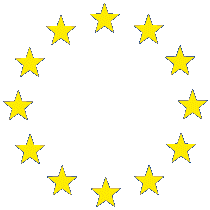Jaakko Malmivuo: Bioelectromagnetism
Recorded at the Ragnar Granit Institute, Autumn 2006.
(.3gp, 192x132 pix)How to view the video files is found from: "Technical Requirements".
 01-10,
01-10,
 11-20,
11-20,
 21-30,
21-30,
 31-40,
31-40,
 41-50,
41-50,
 51-60,
51-60,
 61-70,
61-70,
 71-80,
71-80,
 81-87
81-87
| Lecture 1 | |
| Bioelectromagnetism, Main topics, Textbook, Interdisciplinary sciences | |
| Bioelectromagnetism, Subdivisions of bioelectromagnetism | |
| Bioelectric phenomena, Generation of bioelectric signals, Importance of bioelectromagnetism, Funny example | |
| History of bioelectromagnetism, William Gilbert, Jan Swammerdam, Luigi Galvani, Electrotherapy | |
| Hans Christian Ørstedt, Hans Berger - EEG, Magnetocardiogram, Hermann Helmholtz, Nernst equation | |
| Lecture 2 | |
| Anatomical basis of bioelectromagnetism, Nerve and muscle cell, Cell membrane, Motoneuron | |
| Synapse, Striated muscle, Bioelectric function, Response of the membrane potential, Conduction of nerve impulse | |
| Subthreshold membrane phenomena, Nernst equation, Electric potential and field, Nernst-Planc equation, Illustration | |
| The origin of resting voltage, Electric circuit of membrane, Goldman-Hodgkin-Katz equation, Reversal voltage, Transmembrane ion flux | |
| Lecture 3 | |
| Subthreshold membrane phenomena, Nernst equation, Goldman-Hodgkin-Katz equation, Transmembrane ion flux | |
| Cable equation of the axon, Steady state response, Stimulation with step-current, Strength-duration relation | |
| Active behavior of the membrane, Voltage clamp method, Space clamp, Voltage clamp | |
| Voltage clamp, Examples, Transmembrane ion flux, Preparation of an axon, Fugu fish | |
| Hodgin-Huxley model, Parallel conductance model, Voltage clamp experiments, Model for potassium conductance | |
| Lecture 4 | |
| Hodgkin-Huxley model, Parallel conductance model, Potassium conductance, Model for potassium conductance | |
| Sodium conductance, Model for sodium conductance, A model for channel gating | |
| Hodgin-Huxley equations, Sodium and potassium conductances, Propagating nerve impulse | |
| Patch clamp method, Current through a single ion channel, Modern understanding of the ionic channels | |
| Synapses, receptor cells and brain, Excitatory and inhibitory synapses, Spatial and temporal summation, Electric model of the synapse | |
| Lecture 5 | |
| Model for potassium and sodium conductances, Nobel Prize 1991, Patch clamp method | |
| Synapses, receptor cells and brain, Reflex arch, Division of sensory and motoric functions, Cranial nerves | |
| The heart, Anatomy and physiology of the heart, Cross-section video, Striated muscle, Syncytium | |
| Cardiac cycle, Generation of bioelectric signal, Conduction system, Intrinsic frequency, Electrophysiology of the heart | |
| Total excitation of the isolated human heart, Genesis of the electrocardiogram | |
| Lecture 6 | |
| Volume source and volume conductor | |
| Bioelectric source and its electric field | |
| Volume source in a homogeneous volume conductor | |
| The concept of modeling | |
| The human body as a volume conductor | |
| Forward and inverse problems | |
| Lecture 7 | |
| Volume source, Piecewise homogeneous volume conductor, Green's theorem, Dipole | |
| Theoretical methods, Solid angle theorem, Double layer, Inhomogeneous double layer, Double layer sources | |
| Lead Vector, Ohm's Law, lead vector concept, Lead voltage between two measurement points | |
| Einthoven triangle, Burger Model, Variation of the Frank model | |
| Lead vector, Image surface, Points inside the image surface, Design of orthonormal lead systems | |
| Lecture 8 | |
| Solid angle theorem, Double layer source, Lead vector | |
| Image surface, Design of orthonormal lead systems | |
| Lead field, Sensitivity distribution, Linearity, Superposition | |
| Reciprocity, Hermann von Helmholtz, Historical approach, Electric lead | |
| Ideal lead field, Effect of electrode configuration, Synthesizing an ideal lead field | |
| Lecture 9 | |
| Review of lead field concept, Sensitivity distribution, Reciprocity and electric lead | |
| Gabor-Nelson theorem, Summary of the theoretical methods | |
| Biomagnetism, Equations, Biomagnetic fields | |
| Reciprocity theorem for magnetic fields, Equations for electric and magnetic leads | |
| Magnetic dipole moment, Ideal lead field, Synthesization of ideal magnetic lead, Radial and tangential sensitivities | |
| Lecture 10 | |
| Reciprocity theorem for magnetic fields, Biomagnetic fields repeated | |
| Magnetic dipole moment, Special properties of magnetic lead fields | |
| Sensitivity distribution of basic magnetic leads, Magnetometers | |
| Independence of bioelectric and biomagnetic fields, Helmholtz theorem | |
| Electroencephalograpy, EEG lead systems, Behavior of EEG signal | |
| Magnetoencephalography, History, Sensitivity distribution, Axial and planar gradiometers | |
| Comparison of EEG and MEG half sensitivity, Electrode in the source region | |
| Effect of skull resistivity, Summary. | |
| Lecture 11 | |
| 12-lead ECG system, Waller, Einthoven | |
| ECG Signal | |
| Wilson central terminal, Goldberger leads, Precordial leads | |
| Modifications of the 12-lead system, The information content of the 12 lead system | |
| Lecture 12 | |
| VCG Lead systems, Uncorrected VCG lead systems | |
| Corrected VCG Systems, Frank lead system | |
| Lecture 13 | |
| Frank lead system repeated | |
| Lead systems: McFee-Parungao, SVEC III, Gabor-Nelson | |
| Discussion on VCG leads | |
| Other lead systems, Moving dipole, Multiple-dipole model, Multipole, Clinical diagnosis | |
| Summary of models used | |
| Distortion factors in ECG, Effect of the inhomogeneities, Brody effect | |
| Lecture 14 | |
| Brody effect, Direction of ventricular activation, Effect of blood resistivity | |
| The basis of ECG diagnosis, The application areas of ECG diagnosis, Electric axis of the heart, Ventricular arrhythmias | |
| Disorders in the activation sequence, Myocardial ischemia and infarction | |
| Magnetocardiography, History, Standard grid | |
| Lecture 15 | |
| Magnetocardiography, Methods for detecting magnetic heart vector, McFee lead system, XYZ-lead system, ABC-lead system | |
| Sensitrivity distribution, Generation of MCG signal | |
| Clinical applications: Fetal MCG, DC-MCG | |
| General solution for the clinical application, Theoretical aspects, Helmholz's theorem | |
| The electromagnetocardiography method (EMCG), Clinical study, Results | |
| Lecture 16 | |
| Electric and magnetic stimulation, History, Applications, Taser | |
| Magnetic stimulation, History, Principle of magnetic stimulation, Distribution of stimulation current, Electric and magnetic stimulation of the heart, Pacemakers | |
| Cardiac defibrillation, Mechanism, Defibrillator devices | |
| Measurement of the intrinsic electric properties of biological tissues, Impedance cardiography, Signals, Origin of the impedance signal | |
| Lecture 17 | |
| Impedance cardiography, Signals, Origin of the signal | |
| Accuracy of the impedance cardiography, Other applications of impedance pletysmography | |
| Impedance tomography, Measurement methods, Image reconstruction | |
| Electrodermal response, Lie detector, EOG, Electroretinogram | |
| Lecture 18 | |
| Objectives, Discipline bioelectromagnetism | |
| Subthreshold membrane phenomena, Nerst equation, Origin of the resting voltage | |
| Active behavior of the membrane, Voltage clamp, Results | |
| Bioelectric sources and conductors, Models | |
| Lecture 19 | |
| Theoretical methods in bioelectromagnetism, Solid angle theorem, Image surface, Linearity, Superposition, Electric lead | |
![]()


 Curriculum page
Curriculum page Top of page
Top of page